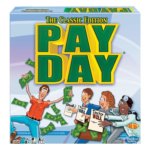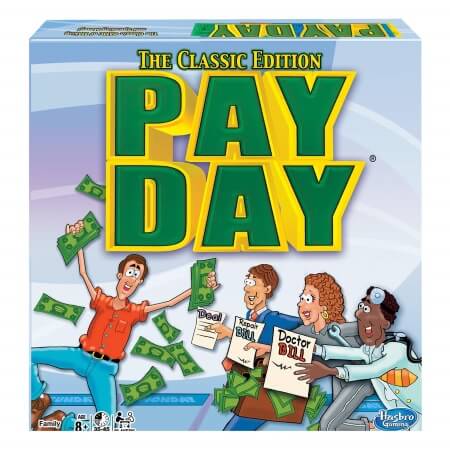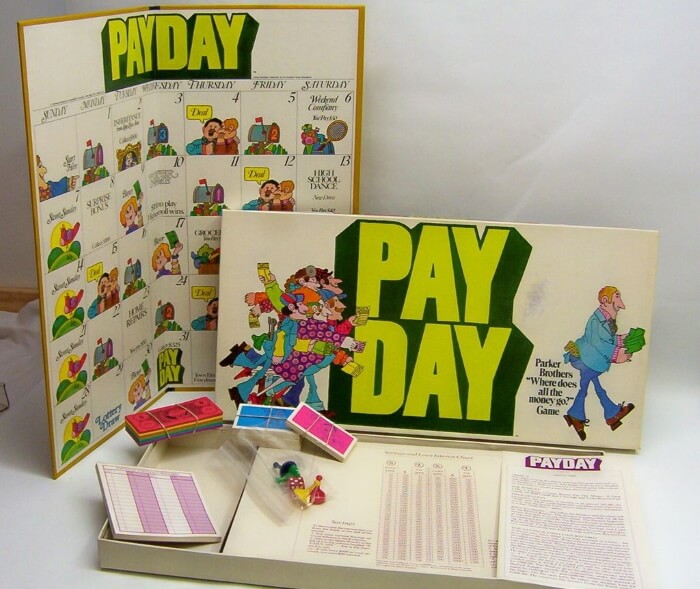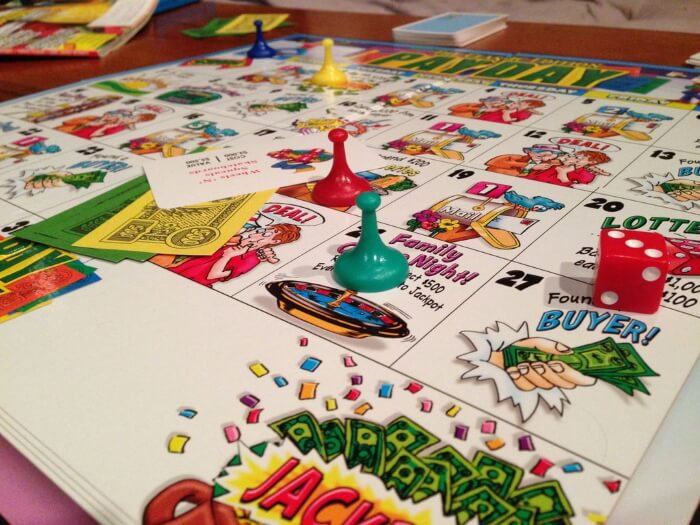Payday at a Glance
| Game Type Roll and Move, Economic, Negotiation, Card Drafting, | Play Time 30 mins | Skill/Complexity (1.5 - 5) Light |
| Age 8+ | Publisher(s) Hasbro, Winning Moves | Published 1975 |
| Categories Family | Players 2 - 6 (4 is best) | Rules Manual Official Rules PDF |
| Our Rating 7/10 | Cost $18.99 |
About – Description
Payday is a board game that was originally published in 1975 and designed by Paul J. Gruen. It’s a family game that is suitable for players aged 8 and over while you can enjoy it with as many as six players although it is recommended that it is best enjoyed with four.
Players can complete Payday in a relatively short space of time making it the perfect choice for families with young children.
Who’s it best suited for?
Payday is best enjoyed as a family although it can be enjoyed by different groups of players.
The way in which the game plays makes it ideal for families as it enables children to learn the value of money and how it can be used and so, it makes sense that parents are there to play it with them.
Skill – Complexity
If you are looking for a game that is relatively simple to get to grips with then Payday is the right choice. It requires an understanding of money and its value but in the main it is a game that is based around rolling a die, moving around the board and following certain instructions.
Set Up – Playing Rules & Instructions
Payday has a very simple set up. The game consists of payday money, 24 deal cards, 48 mail cards, six tokens, 1 die, a loan record pad.
Anything from 2-4 months works well and once this has been done all players are put on the start space and given $3,500 dollars each. Two players are made as the banker and the loan record officer.
To start the game, the die is rolled and the player moves that many spaces along the board following the instructions of the space that they land on. If the player lands on a Deal or Mail space, they then have to pick a card from the corresponding deck.
Some of the mail cards will include bills or collections with bills being paid at the end of the month and collections being paid immediately. The deal cards offer you the chance to buy that deal that is offered.
Throughout the game, players have the chance to make purchases, use loans to make purchases while making payments throughout the month.
Once a player makes it across the board, they collect their wages as well as 10% interest on any savings or pay 20% on any debts they owe. All bills must be paid and if they do not have the money available to pay the bills then they must take out a loan to pay them.
This then continues for the predetermined duration of the game with the winner being the person who has the most cash after all debts have been deducted.
If all players find themselves owing money, then the player who owes the least amount is classed as the winner.
Versions – Editions
The game has remained largely unchanged since its releases although a few minor changes were made in 1994. Editions have been released throughout the world including a 30th Anniversary Edition in 2005.
Likes & Dislikes
One common theme is that players found that it’s not as good as the original but it is still an enjoyable game to play with children. Players like the simple roll and move aspect of the game and in some cases, the fact that it works well as a family game made it possible for children to enjoy as well.
Final Thoughts
A great game that is suitable for even the younger players among us. The roll and move aspect makes it an easy game to grasp and its real-world approach to finances gives children the chance to learn at the same time.
It is not a game you can immerse yourself in for hours on end but that is why it is such as a fast and exciting game to play.




